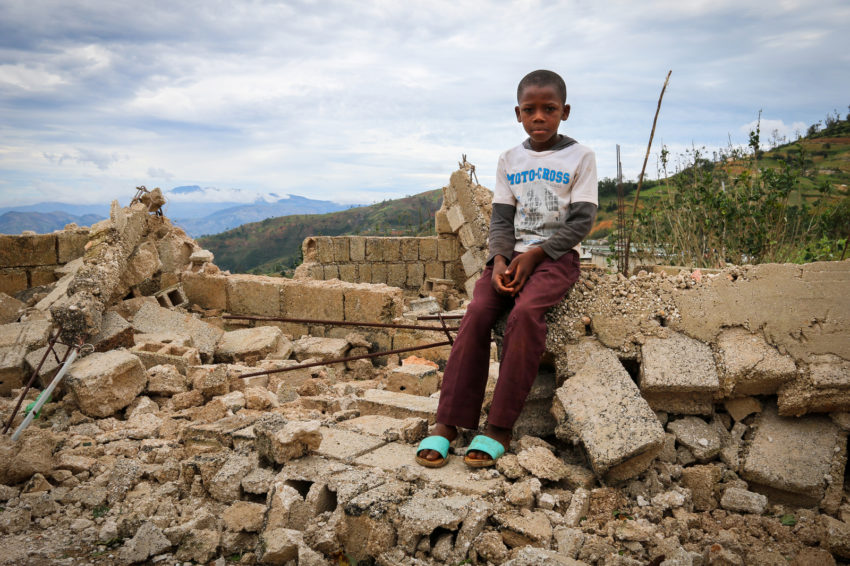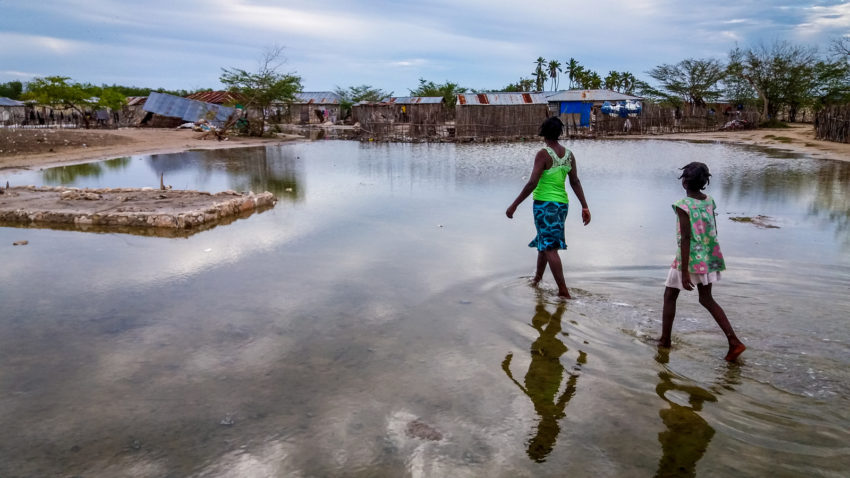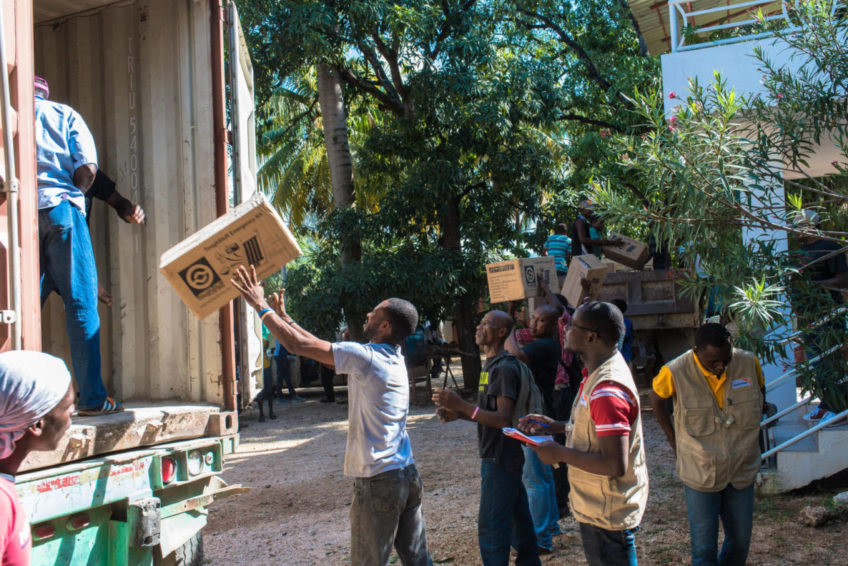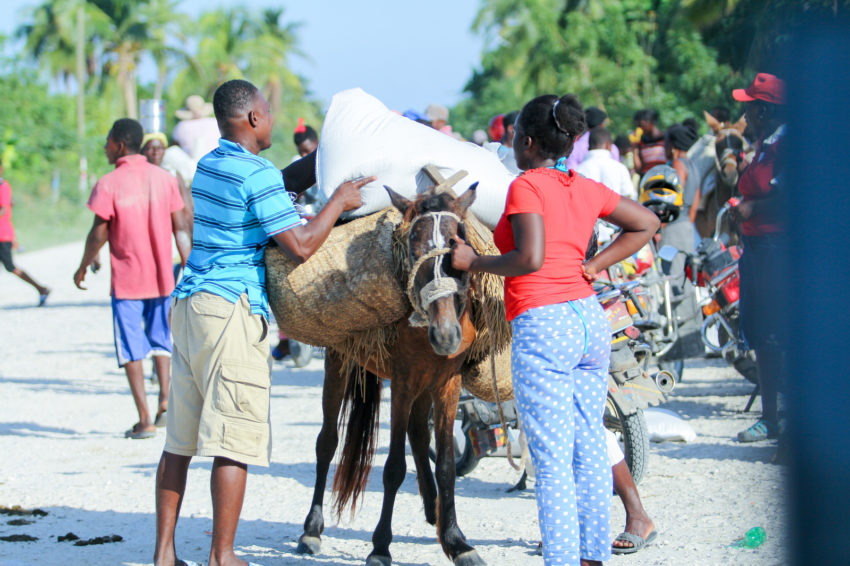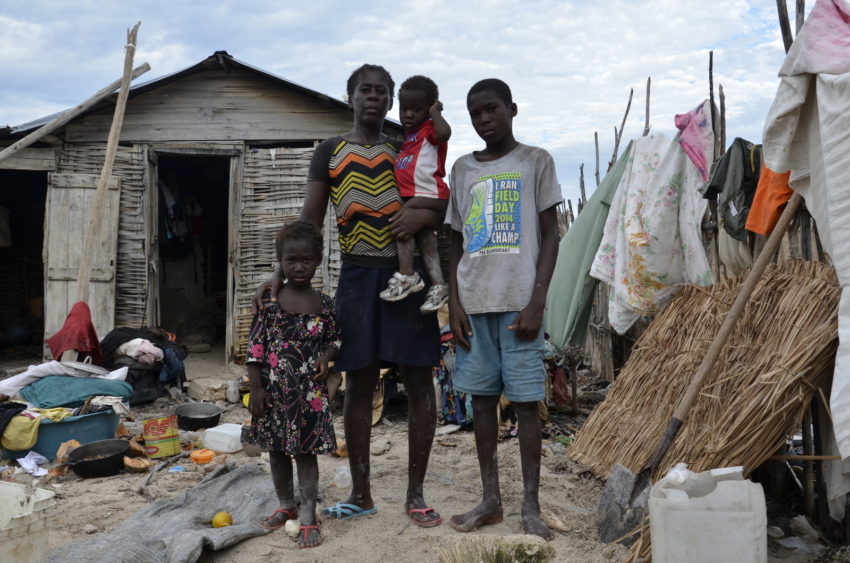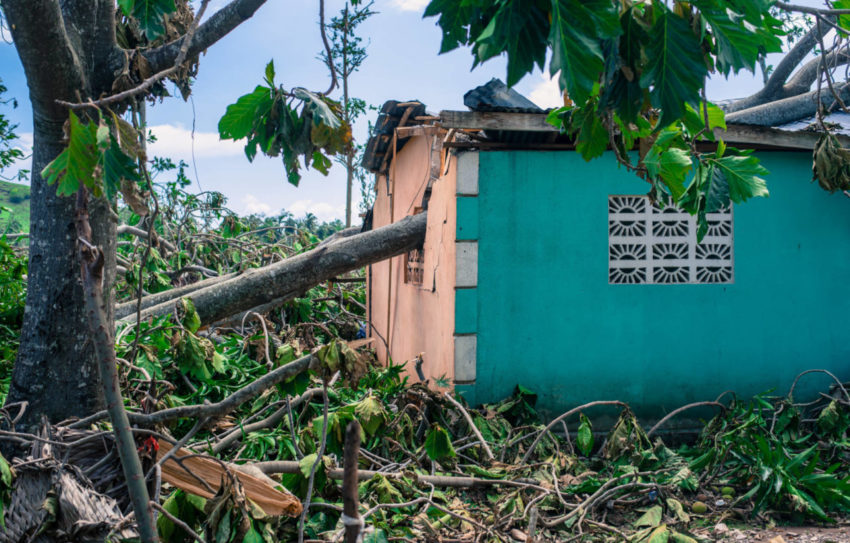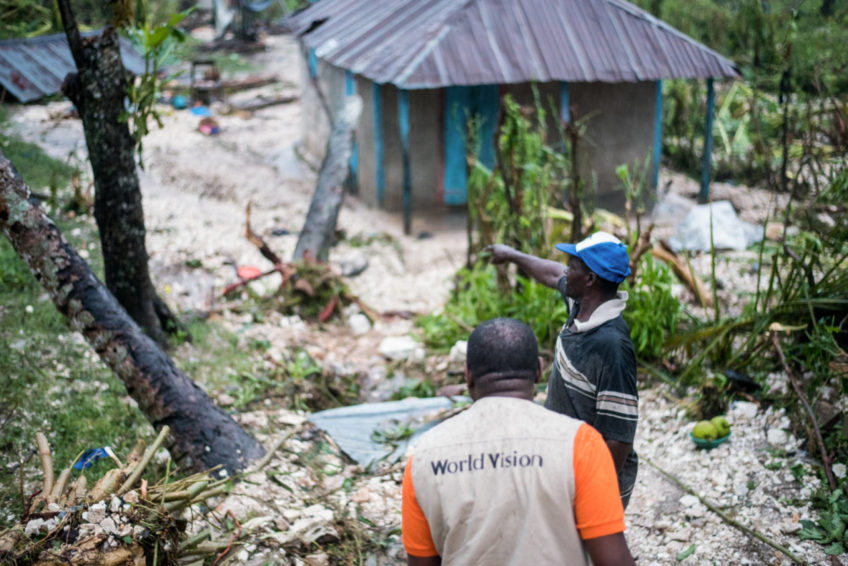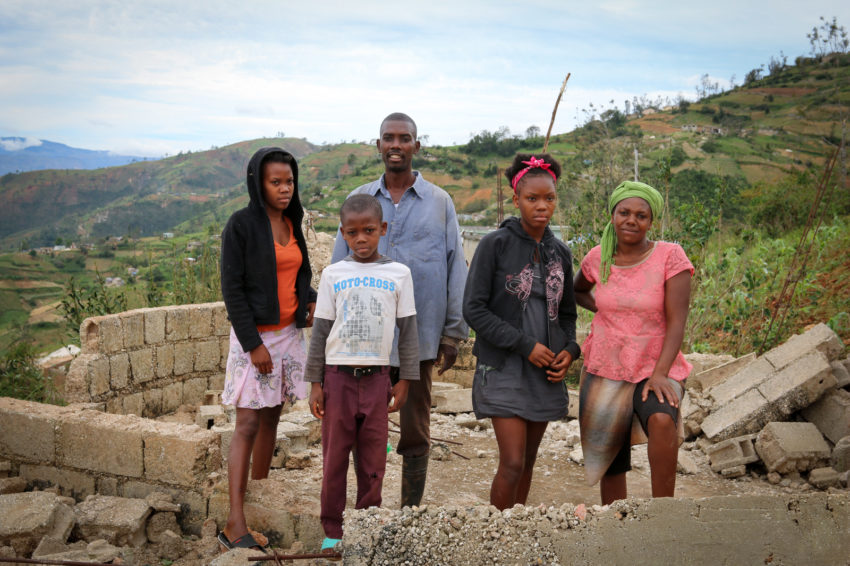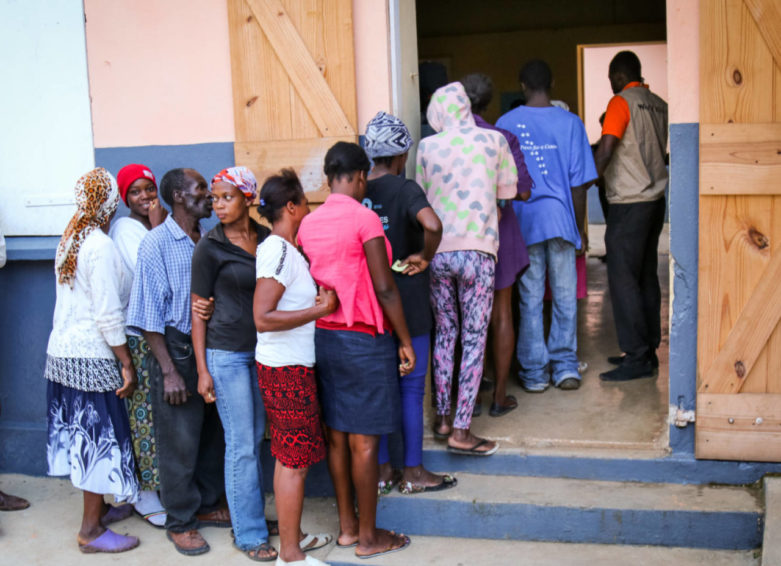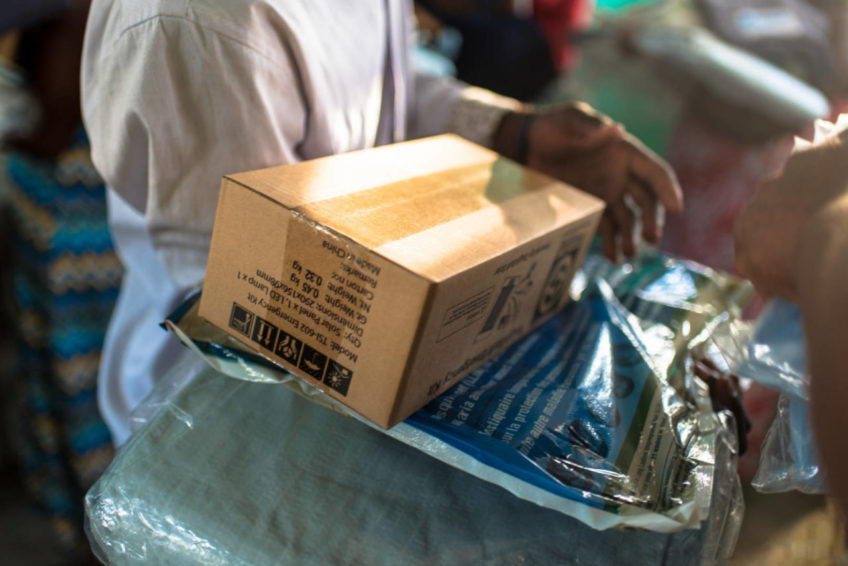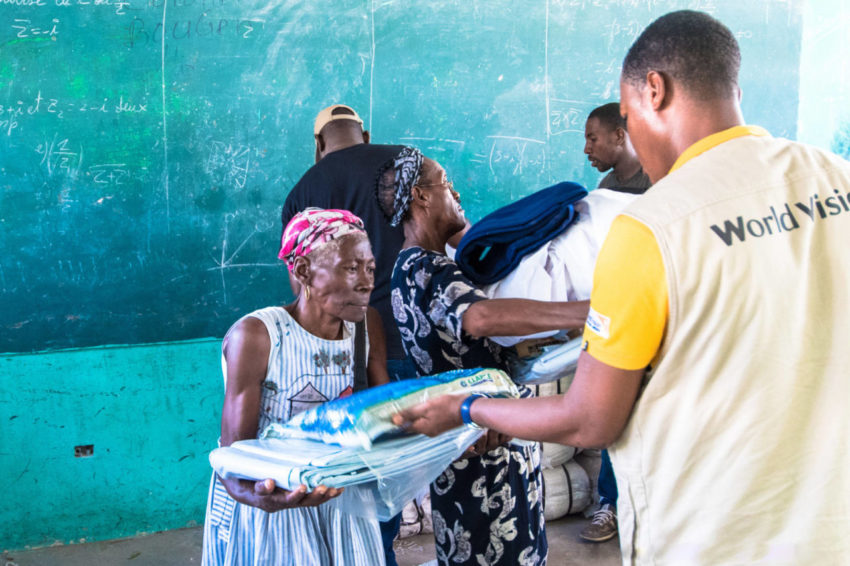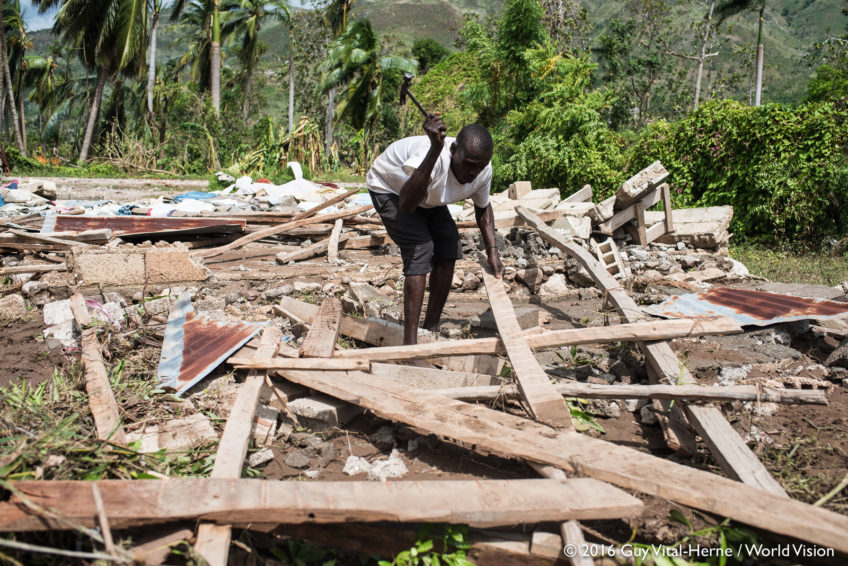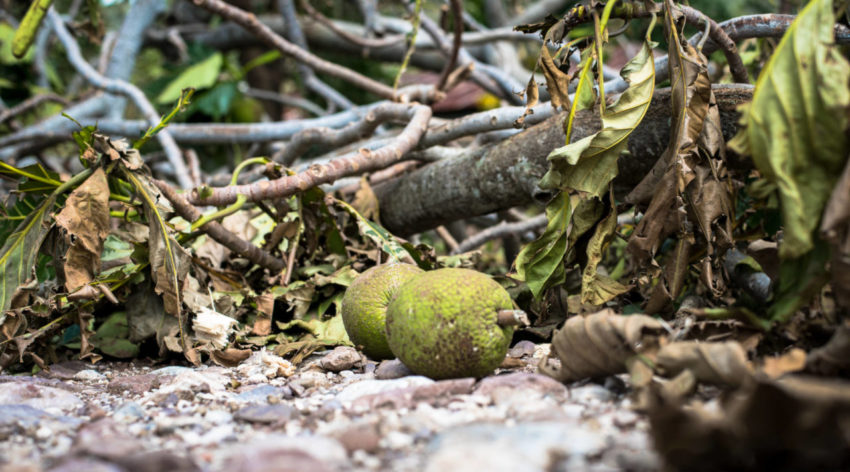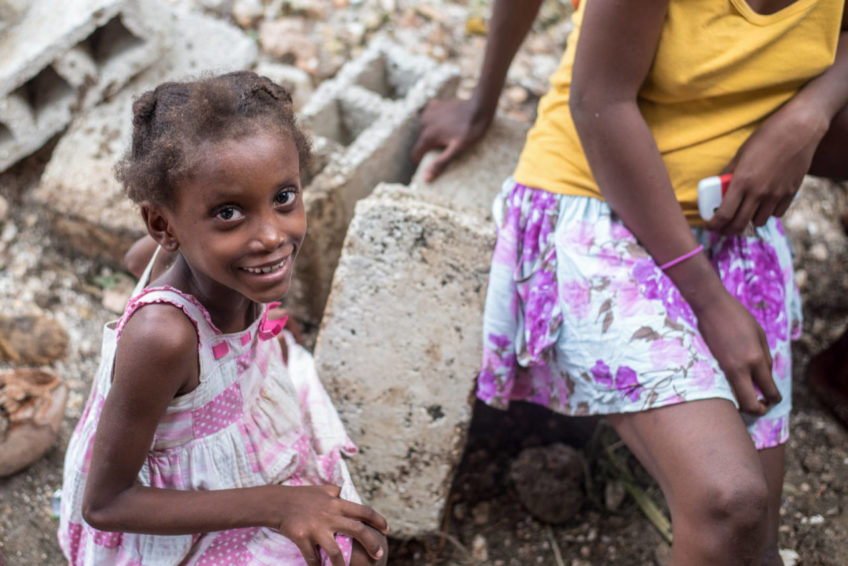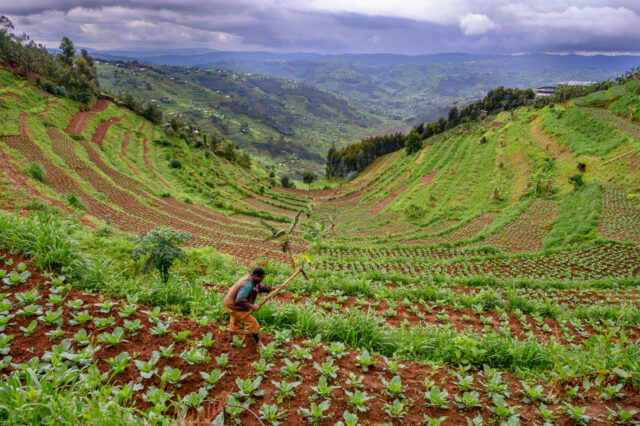Hurricane Matthew hit Haiti on Oct. 4, 2016, as a Category 4 hurricane with torrential rain, massive storm surge, and winds up to 145 mph. Death tolls and damage reports rose rapidly in the days following the landfall, characterizing Hurricane Matthew as the largest humanitarian emergency in Haiti since the earthquake of 2010.
The U.N. Office for the Coordination of Humanitarian Affairs estimated that 2.1 million people were affected by Hurricane Matthew; 1.4 million people needed humanitarian assistance. In addition to immediate needs for shelter, food, clean water, and household goods, Haitians faced a food security crisis. Agricultural plots, seeds, and irrigation systems were destroyed in Haiti’s southern “bread basket.”
After devastating Haiti, Hurricane Matthew moved past Cuba and the Bahamas, then inundated coastal areas of Florida, Georgia, South Carolina, and North Carolina. While passing along the U.S. coast, Hurricane Matthew left more than 40 people dead and thousands of homes flooded and without power.
Hurricane Matthew timeline
In late September 2016, a tropical wave formed near the Cape Verde Islands, blew west through the Atlantic and strengthened until it became Tropical Storm Matthew as it neared the Caribbean.
2016 — Another setback for a fragile Haiti
- October 1: Hurricane Matthew reached its peak strength as a Category 5.
- October 4: The storm hit Haiti and Cuba as a Category 4 hurricane.
- October 5 to 9: With heavy rain, though diminishing in force, the storm battered the Bahamas and U.S. Eastern Seaboard.
2017 to 2018 — Recovery and reconstruction
FAQs: What you need to know about Hurricane Matthew
Explore frequently asked questions about Hurricane Matthew, and learn how you can help disaster survivors in Haiti:
- Fast facts: Hurricane Matthew
- Where did Hurricane Matthew cause the most damage?
- What hardships did Haitians face because of Hurricane Matthew?
- How can I help children and families in Haiti?
Fast facts: Hurricane Matthew
- Hurricane Matthew, in October 2016, was the first Category 5 Atlantic storm since Hurricane Felix in 2007.
- With an estimated 546 deaths and $1.9 million in damages, Hurricane Matthew was the worst disaster to hit Haiti since the 2010 earthquake.
- In the U.S., more than 40 people died and damage was estimated in excess of $10 billion.
- Flooding and power outages were the most widespread effects of the storm in the U.S.
Where did Hurricane Matthew cause the most damage?
Hurricane Matthew made landfall over southwestern Haiti, the country’s top agriculture production area. Staple food crops including rice, corn, and beans were wiped out. Plantations of export crops, including coffee, cocoa, and fruits, were destroyed. Experts say it will take at least five years to restore them.
Roads and bridges were destroyed and communication lines were cut. World Vision’s assessment team and partners in the hardest-hit area saw 80 to 90% of homes damaged or destroyed. On the island of La Gonâve, where World Vision assists 10,000 sponsored children and their families, as many as 50% of houses were damaged.
In the days after the devastating hurricane, World Vision’s National Director John Hasse said that though World Vision’s Haitian staff have experienced many storms, “They are still shocked at how the landscape has been flattened, as well as the amount of buildings, trees, and crops that are destroyed. Our teams are just shocked at the depth of the destruction.”
What hardships did Haitians face because of Hurricane Matthew?
Food, water and sanitation, shelter, and health support were the top concerns.
Food — A large portion of Haiti’s food is produced in the south where the damage was most severe. Hurricane Matthew destroyed many crops as they were coming close to harvest.
Food security and malnutrition, especially among children, were already a concern. In some of the storm-affected areas, about 30% of children show signs of stunting, which indicates long-term hunger.World Vision was helping to make good progress in areas like children’s nutrition after the drought in 2015, and 2016 had been a good year for crops.
Water and sanitation — Families without clean water and sanitation are at high risk of cholera and other diseases related to dirty water, which are especially dangerous for children. Clean water is a chronic issue in Haiti.
World Vision has been doing some innovative work to address water issues in Haiti. Our work has completely eradicated cholera in many communities, prompting village leaders in surrounding areas to seek our help in their communities, too.
Shelter, health, education — Shelter was a big need. Shelter kits with tarps and tie-downs, along with hygiene and household goods, helped families to stay in place until roofing materials and other necessities could be provided.
Beyond shelter, we strive to help Haitians experience a quality of life that supports children’s well-being. In the long term, we work with communities to define the improvements they need to achieve their goals.
How can I help children and families in Haiti?
- Pray for children and families affected by poverty and recurring disasters in Haiti.
- Give to World Vision’s disaster relief fund. Your gift will help provide emergency food aid, agricultural support, clean water, medicine, and other essential care to children and families.
- Sponsor a child. When you sponsor a child, you will help change a child’s life story and the life of their family and community. You’ll provide access to life-saving basics like nutritious food, healthcare, clean water, education, and more.
World Vision’s work in Haiti
World Vision has worked to bring disaster relief and development assistance to Haiti since 1959, especially in the aftermath of the 2010 earthquake. World Vision programs in 200 rural and urban communities in Haiti serve more than 900,000 people, including 58,000 sponsored children and their communities.
Within hours after Hurricane Matthew’s wind and rain subsided, World Vision staff in Haiti began distributing blankets, toiletries, and bottled water to Port-au-Prince families displaced by the storm. We had pre-positioned relief supplies such as tarps, blankets, water containers, and hygiene kits to quickly assist impacted families.
2016
- Late September: World Vision staged pre-positioned relief items ahead of the storm making landfall.
- October: In both Haiti and the United States, World Vision teams made damage assessments and began distributing food, household items, clean-up kits, and hygiene items.
- October: World Vision’s Haiti relief operations were established in Nippes and Sud, on the southwest peninsula, La Gonâve island, and the outskirts of Port-au-Prince.
2017 to 2018
The response in Haiti continues into 2018 in the areas of food, health, water and sanitation, education, and child protection.
- World Vision’s food response: meals, cash, and food vouchers for short-term support; seed distribution and agriculture support for long-term support; assistance to build livelihoods and incomes
- World Vision’s clean water response: jerry cans, water purification tabs or filters, and hygiene kits for short-term support; repairing water points and constructing latrines for long-term support
- World Vision’s support to children and families: Child-Friendly Spaces for short-term support; tarps, mosquito nets, household goods for long-term support; rehabilitating schools and clinics; roofing kits
